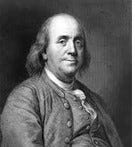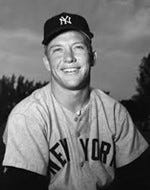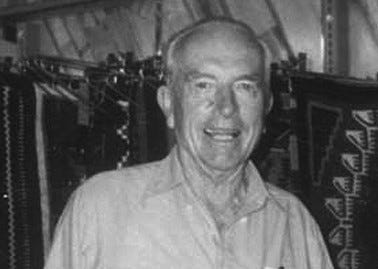You’re reading a free edition of What They Said newsletter, which goes out once per week. If you upgrade to a paid subscriber for $6 per month, you will not only be supporting this project, but you will also receive weekly issues of this newsletter. Substack provides me, as a writer, an alternative means of publication.
” Live a good life so that when you get old, you can enjoy it again with your memories”.
Ben Franklin
Because many people read my postings for the first time, I often repeat the history of my family in the Indian trading business since it is foundational to who I am and what I have done during much of my 80+ years.
In the early 1970s there were 12 wholesale trading operations in the Gallup Yellow Pages. Our company, Gallup Indian Trading, was one. We handled American Indian arts and crafts from throughout North America and built a national sales force delivering inventory to over 500 accounts that would ultimately grow to over 2,000. Dad methodically built his company into the largest in the Indian business. I say “we” because I started learning from him at the age of nine and never stopped, except for college and a brief corporate career. I had the good fortune to be along for the ride and enjoyed all of the times we spent together. In the process he gave me opportunity to learn and do my part for the company. He was always a giver, not a taker. Everyone should be so fortunate to have a good working relationship with their dad. I used to say that working with one’s dad was the toughest job in the world, but I did not mean it maliciously. I had high expectations of myself.
“We make a living with what we get but we make a life with what we give”.
Winston Churchill
Known as “The Indian Capital”, Gallup was and remains the epicenter for handmade American Indian jewelry. The majority of the jewelry is produced wihin 50 miles of Gallup. Within two years there were 400 “Indian traders” in Gallup. Anyone with a few hundred dollars became an Indian trader, despite no experience in either the Indian business or, for many, business in general. The moniker “Indian Trader” was important to their legitimacy with those unfamiliar with the business.
Dealers popped up all over the world and they needed a Gallup supply connection. If they had a friend of a friend who lived in Gallup and could get Indian jewelry for them, a trader was born.
The invasion of competitors didn’t concern us because we had established customers and a rising tide raises all boats. What did concern us was the disruption of pricing. Newcomers had no idea of value or the traditional pricing structure. The Indian business is unique in that everything is priced from retail back to wholesale. That is because retail dealers in the business generally don’t have a grasp of value. They always needed pricing guidance and became dependent upon the pricing structure created by the wholesalers. If newcomers were asked to price jewelry from cost to retail, they were befuddled. Traditional pricing was the cost of the item times three for the retail price. Wholesale was a 50% discount. There were people (jobbers) that wholesaled and because of their volume, they purchased with another 20% off of wholesale. Everyone in the trade knew the legitimate jobbers and anyone posing as a jobber was easily exposed by lack of volume. Many retail dealers repriced their merchandise based upon their market but they had a price base from which to work.
Before long, everyone was proclaiming to be a jobber for the bigger discount. The newcomers knew that demand could dictate pricing and demand could be influenced with inflated discounts since few people understood value. To accommodate their demand, newcomers priced as much as nine to twelve times to the retail. The discount structure remained so that dealers could ascertain the math model. Items costing $20 usually sold for $24 at jobbing, $30 wholesale, and $60 retail. Instead, many created a pricing model from a $20 purchase to $72 to $120 with wild discounts. The newcomers gave jobber discounts to anyone because they promoted discounting not value. New dealers were excited to know that they could get an item for, say, $60 and sell it for $180 because of the discount. It was a faulty pricing model that would come back to bite the industry. The newcomers were making a lot of money and dealers were making a boat load because of demand. People were entrapped to thinking that discounts related to value. The craftspeople did not realize such exorbitant pricing, but they were making money too. Many newcomers caused false security throughout the trade.
$100 bills became known as “Zuni Ones”. The better craftspeople offered their goods at scheduled times, and it was not unusual for 10 or 15 buyers to be waiting outside their homes to buy. We continued to deal with our regular craftspeople, many of whom remained dependable because we had been doing business together for several generations.
What caused such an unprecedented spike in the market? The industry had no Madison Avenue marketing campaign so what fueled demand? Who controlled it?
If you take no risks, you will suffer no defeats.
But if you take no risks, you win no victories.
Richard Nixon
First, President Nixon, who was a long-time advocate for American Indians instilled the most advanced policies beneficial to American Indians. His Indian policy remains an example of how a President can make lasting and meaningful benefits for American Indians. He was also a collector and admirer of Indian arts and crafts. Soon after he took office, he announced that his administration would make a practice of providing foreign dignitaries with American Made gifts. He was prompted by our Congressman, Ed Foreman who was representing his constituents’ best interests.
The Kennedys were known for giving French glassware to visiting dignitaries. Indian jewelry was, and is, a uniquely American product. Nixon expanded from jewelry to crafts from tribes throughout America. Mom and Dad made several trips to D.C. with select merchandise for White House dignitary gifts. Simultaneously prominent Hollywood and western stars began wearing Indian jewelry. Leading that large group was the actress, Jill St. John. She became an unofficial and high-profile spokesperson for American Indian jewelry. Large retail department stores rode on her reputation by promoting the “Jill St. John” look.
After his presidency, Nixon made many trips to the Navajo reservation as a citizen tourist.
We were not comfortable with the unrealistic pricing issue and steadfastly refrained from any new business that expected or demanded unrealistic discounts. Many new dealers were boastful about spending thousands of dollars, but it was all relative to us. We didn’t want to hang our hat with someone that might not be back for follow-up business. We refused to do business with department stores because of their payment reputation which included unauthorized return of merchandise against unpaid balances. Many dealers came to us because we were established. When we did not accommodate discount demands, they were essentially forced into the newcomer pool. We opened the door for many competitors. In the end department stores forced many “traders” out of business because they lacked capital to hang with the never-ending late payment issues.
As traders began grabbing inventory with reckless aband, we devised a means of inventory contol. It is one thing to have a milion dollar inventory but if it is not balanced, cash can run short. We got into computers in 1974 following my experience with General Foods. We were the first in the business to do so. People always maintained that the handmade jewelry business could not adapt to computers. We agreed and went about our business for about twelve years before others in the trade got computers. Even then, they only used them for corrrespondence and billing. We had a state-of-the-art inventory and sales management system that I carried over to my own company in 1982..
Gallup Indian Trading was unique in that we mainly sold on credit. Fortune 100 companies such as National Parks, could not conform to any means of purchasing except credit. Seasonality futher pressured credit as they purchased in the winter and sold in the summerl Virtually everyone in the business sold for cash, especially the newcomers because for the most part, they were undercapitalized. Demand becoming what it was, we decided to create some competitors that sold for cash only and we backed them with inventory purchases. Not only did it generate cashflow for us. but it also kept us attuned to dealer activities and loyalties and sustained our inventory demands We grew to handling 30,000 pieces of Indian jewelry and 6,000 Navajo rugs a year.
One such “competitor” was an operation with a reputable Navajo lady and her husband. She came from a prominent Navajo family and was experienced in the Indian business. He was a flamboyant,non-American Indian guy who assumed all of the credit for their success despite no business or Indian jewelry experience. We financed them with access to inventory. They in turn set up as buyers in Zuni. We fronted their purchasing funds and settled weekly on sales. Soon we suspected that we were financing a drug operation. The strength of our deal was the wife, and she was losing control of her husband. He was chartering jets to Las Vegas on our dime while failing to meet weekly accounting of inventory and cash. Matters became worse when he absconded with cash and inventory and moved to Albuquerque. We reported the matter to the McKinley County Court and Bernalillo County Sheriff in Albuquerque. The Bernalillo Sheriff agreed to put him under surveillance. We got a call that a suspected drug deal was going down and our guy was reputed to have $500K plus inventory. We arranged for a search warrant. When the Sheriff went to execute the warrant, he found death, destruction, and no cash or inventory.
Despite the nasty ending we continued with our sponsorship of “competitors” and had success for the next ten years while the Indian jewelry business flourished. But it was inevitable that the goose laying the golden egg would eventually get shot and many people didn’t know what happened. The bloom began to fall from the rose in the late-80s. Attributable primarily to the fickle-finger of fashion-fate with inability to sustain the market appeal I attibuted it to the “Mantle Effect”.
If I knew I was going to live this long, I’d have taken better care of myself.
Mickey Mantle
“Close the door on the past. You don't try to forget the mistakes, but you don't dwell on it. You don't let it have any of your energy, or any of your time, or any of your space.
Johnny Cash
Some newcomers remained in the trade and become good, reliable, and successful wholesalers. Today the number of wholesalers in Gallup is about 35.
“People will always do business with people that they like”.
John W Kennedy - Indian Trader
American Indian jewelry maintains a strong economic presence in New Mexico. While Gallup is considered a wholesale center, Santa Fe has a high retail profile. New Mexico remains the largest trade center in the world for handmade American Indian arts and crafts. Several hundred American Indian craftspeople are not likely to overproduce for a world supply.
Next Week: Leaving my friends beside the road









